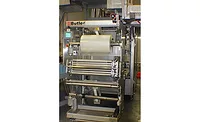Field Reports
Dairy cuts downtime caused by power interruptions
Four power events per year cost the dairy $200,000, but power protection equipment has eliminated the interruptions.
Globally, Fonterra produces more than 22 billion liters of milk each year; the Takanini facility packages 750,000 liters of fresh milk each day at a rate of 6.4 bottles per second. To meet growing demand in the global UHT (ultra-high-temperature pasteurization) market, the facility expanded and upgraded its UHT processing and packing equipment. With an expansion in production, however, comes increased power usage. The facility now uses 109 megawatts of power per day, which is mainly drawn by the large AC drives and motors used in the facility’s production lines.
The production lines are sensitive to voltage sags and short-term outages that usually range from between one to 60 seconds. The energy/power interruptions to the machinery can result in serious financial loss since they cause uncertainty about whether the milk has been properly sterilized. Disposing or reprocessing of the milk are the only options.
“We process a large amount of UHT milk, and that requires us to maintain a high level of sterility in the plant,” says Peter Williams, Fonterra’s brand group automation and control manager for New Zealand. “Whenever we have a power event, we lose that sterility to the [process equipment] in the plant.”
“When a glitch occurs in our facility, we need to go through a [re-]sterilization process that takes around four hours. An event like this across seven production lines [four hours per line] costs us 28 hours of downtime and around $50,000 in costs to our business. These events would typically happen to us two, three or four times a year.”
Fonterra decided to install and implement an ABB PCS100 active voltage conditioner (AVC).
The PCS100 AVC conditioner, part of the ABB power protection portfolio, eliminates these voltage disturbances at Fonterra’s facility, as well as unwanted downtime and wasted milk product, not to mention further losses in the supply chain. “We could be looking at total savings of $500,000 a year,” estimates Williams.
The PCS100 AVC conditioner also offers the lowest total cost of ownership by requiring no energy storage and maintaining a 99 percent operating efficiency. In addition, it fits into a small, confined area of Fonterra’s equipment room. Available in load capacities up to 2.4MVA and beyond, the unit corrects for under- and over-voltages, even with regenerative loads.
Williams says Fonterra plans to use ABB products to improve the power quality in other locations. “We are looking to use this solution at other UHT sites, just to guarantee the supply stability we need. Our mission is to become the world’s most trusted source of nutrition, and ABB products are a crucial part of that process.”
Editor's Note: Since installation in September 2014, the facility has suffered five power quality events. The PCS100 AVC was able to ride through these events, maintaining operation of the UHT area, while the other production lines not protected by the PCS100 AVC shut-down. This caused production downtime to production lines not protected by the power protection solution. Furthermore, the payback period of the PCS100 AVC has already been achieved due to the power quality events within this period.
For more information: Sumit K. Chatterjea, 630-400-0882, sumit.k.chatterjea@us.abb.com, www.abb.com/ups.
Looking for a reprint of this article?
From high-res PDFs to custom plaques, order your copy today!






